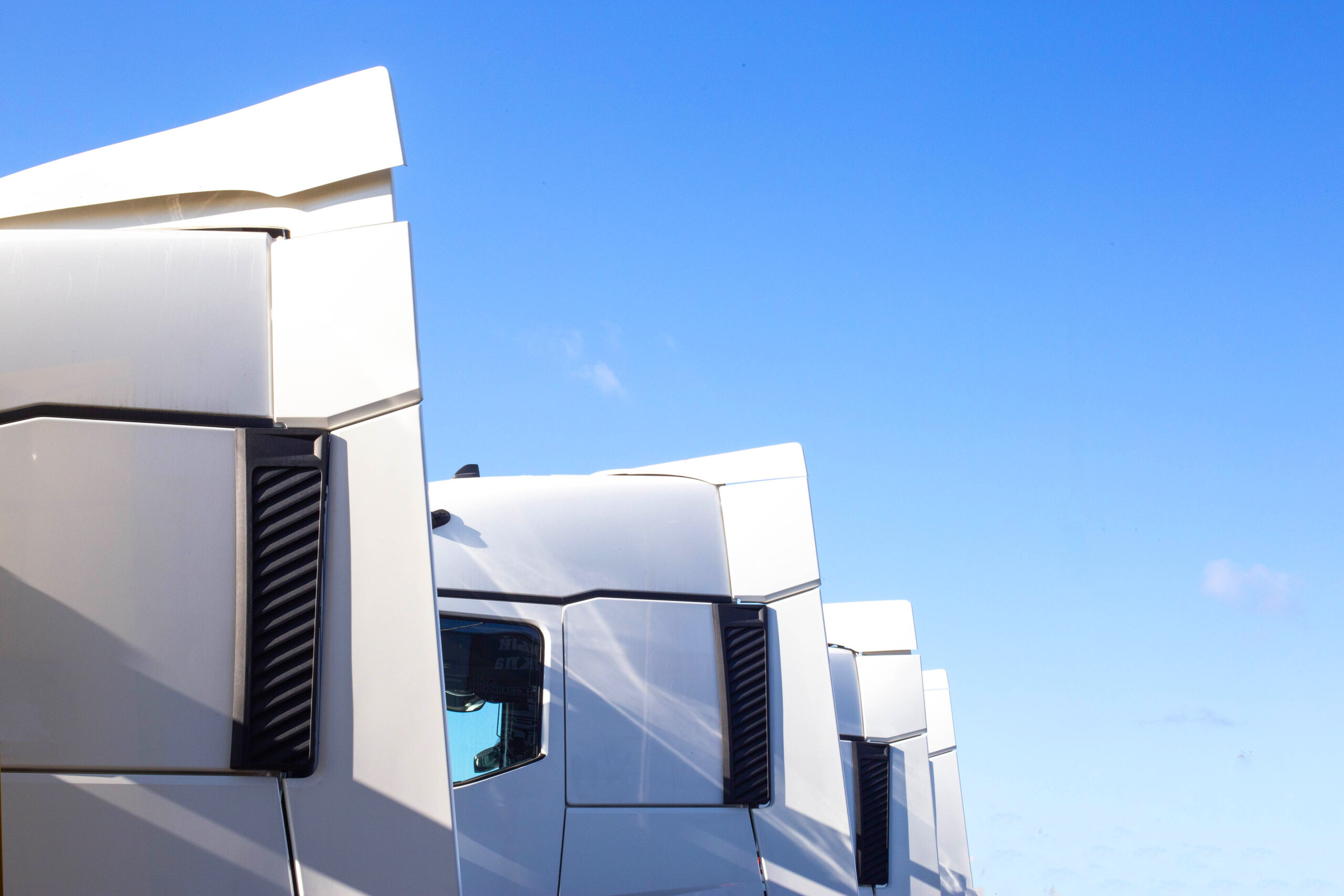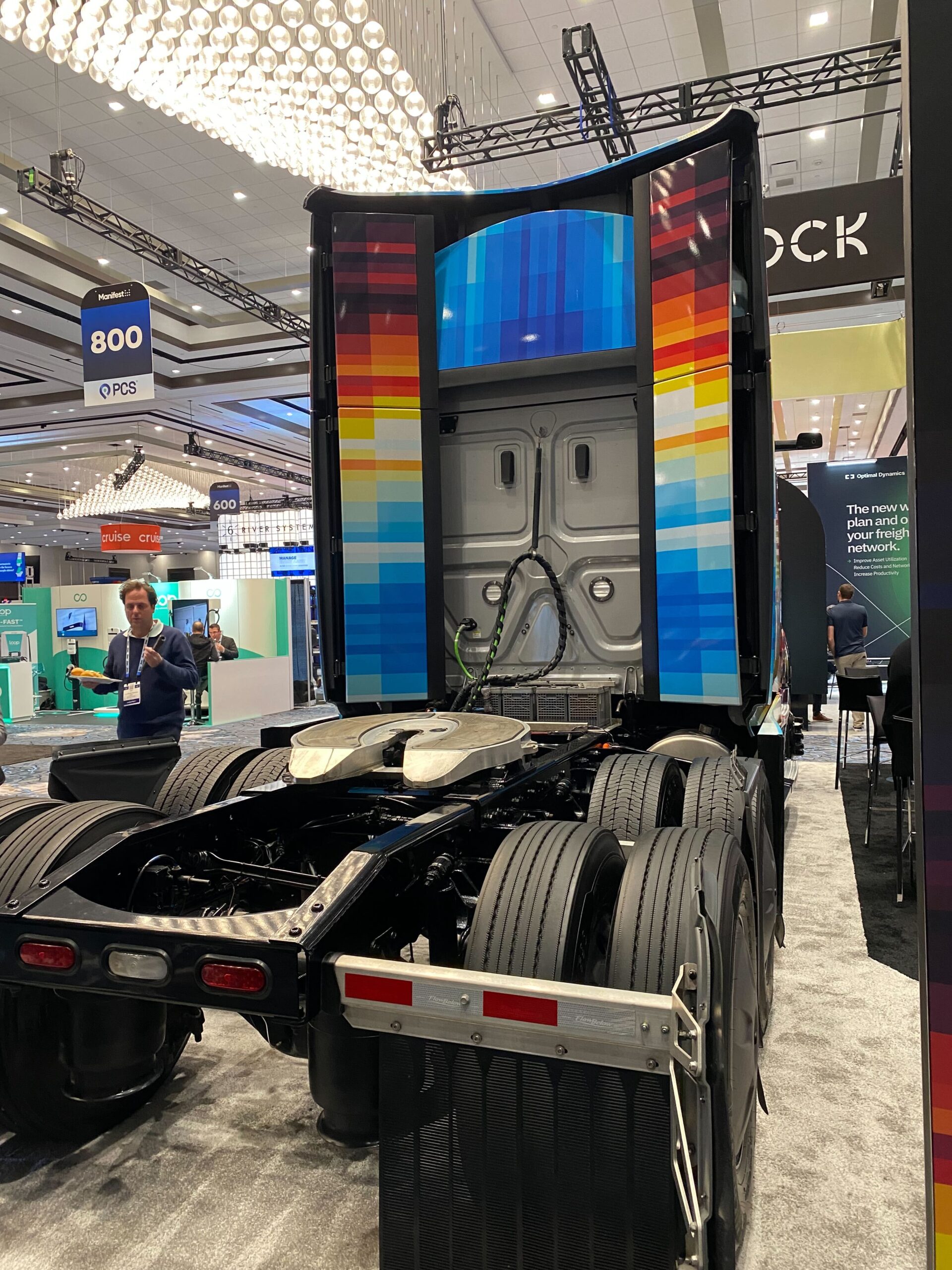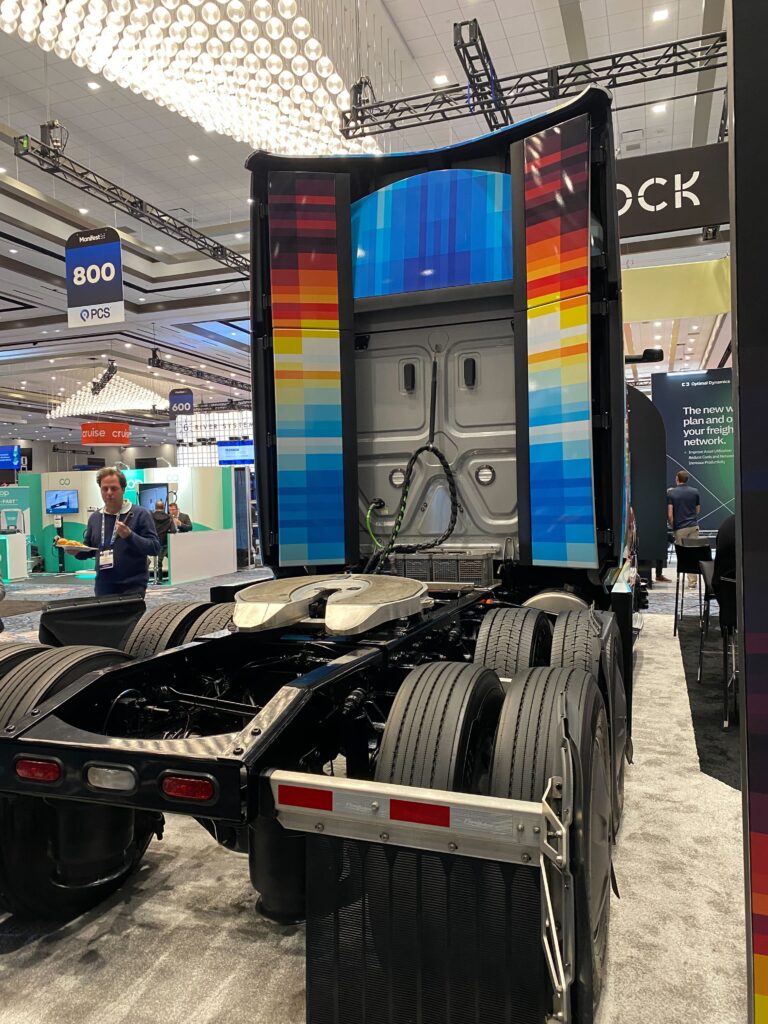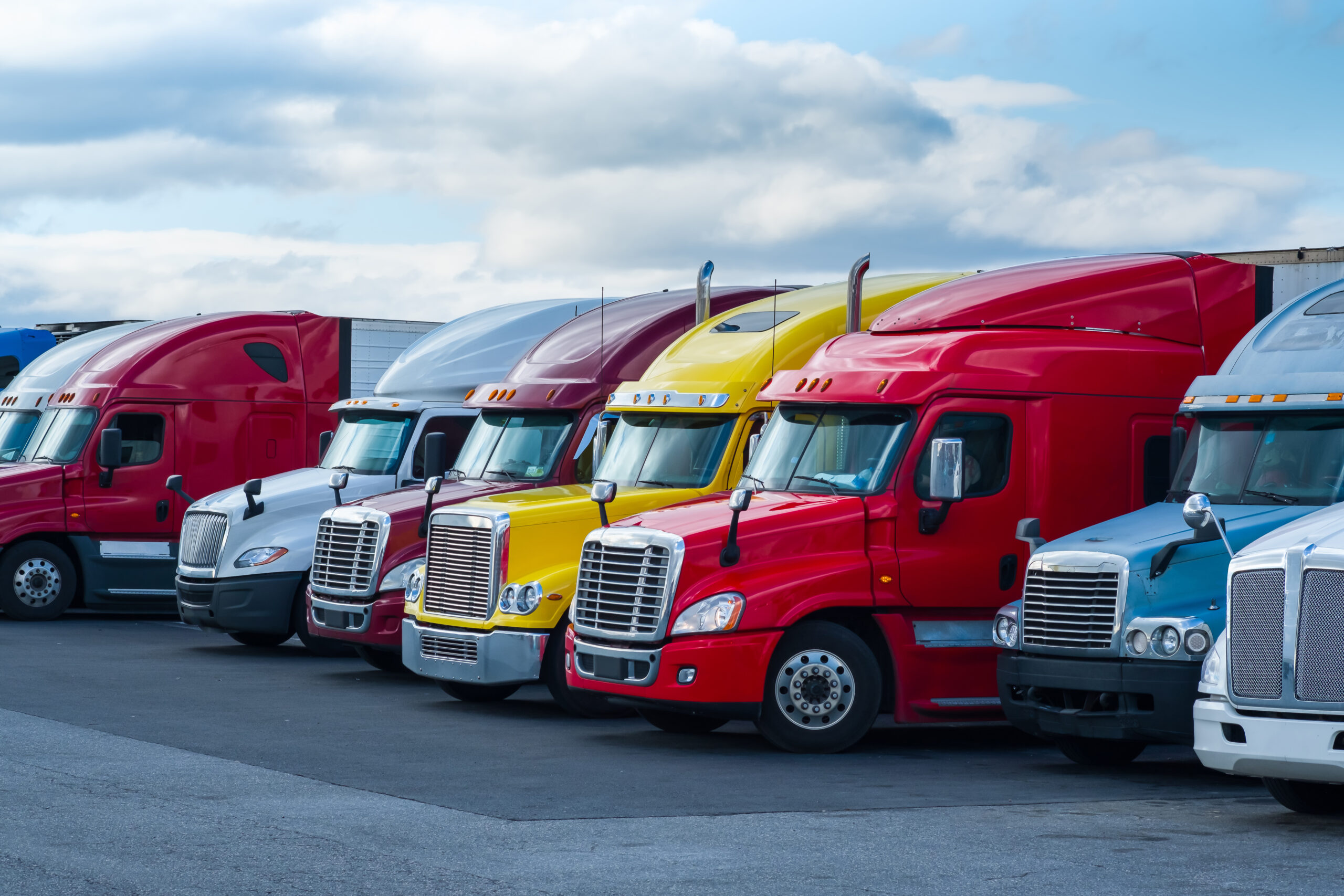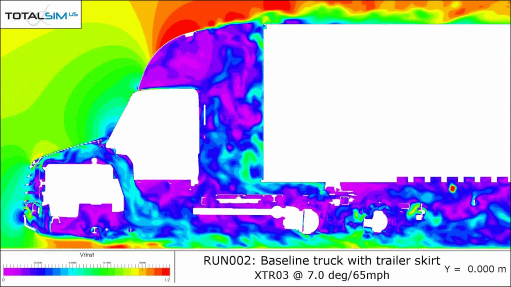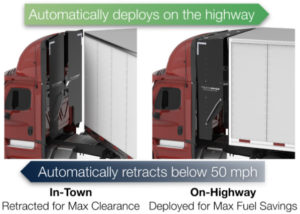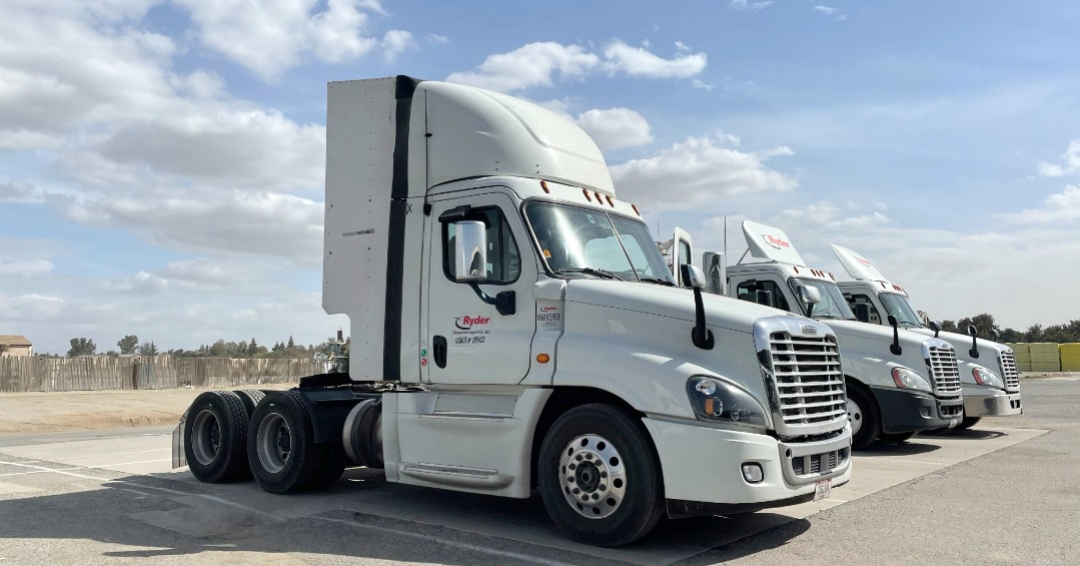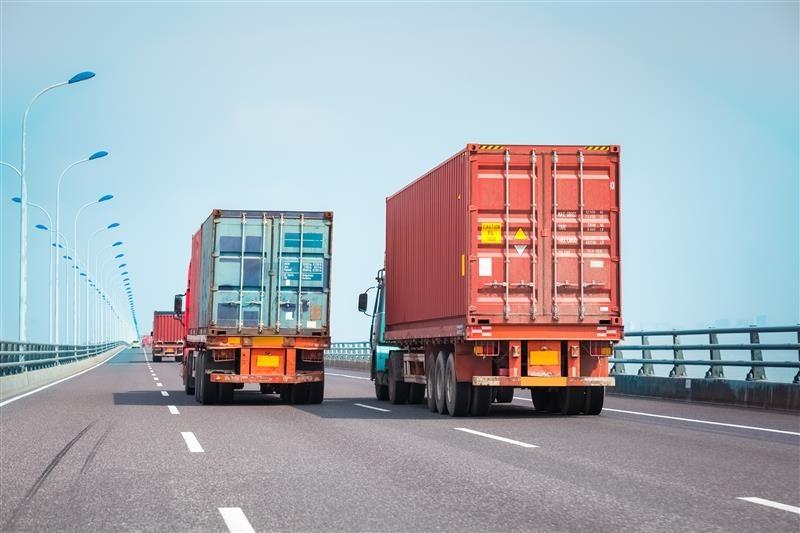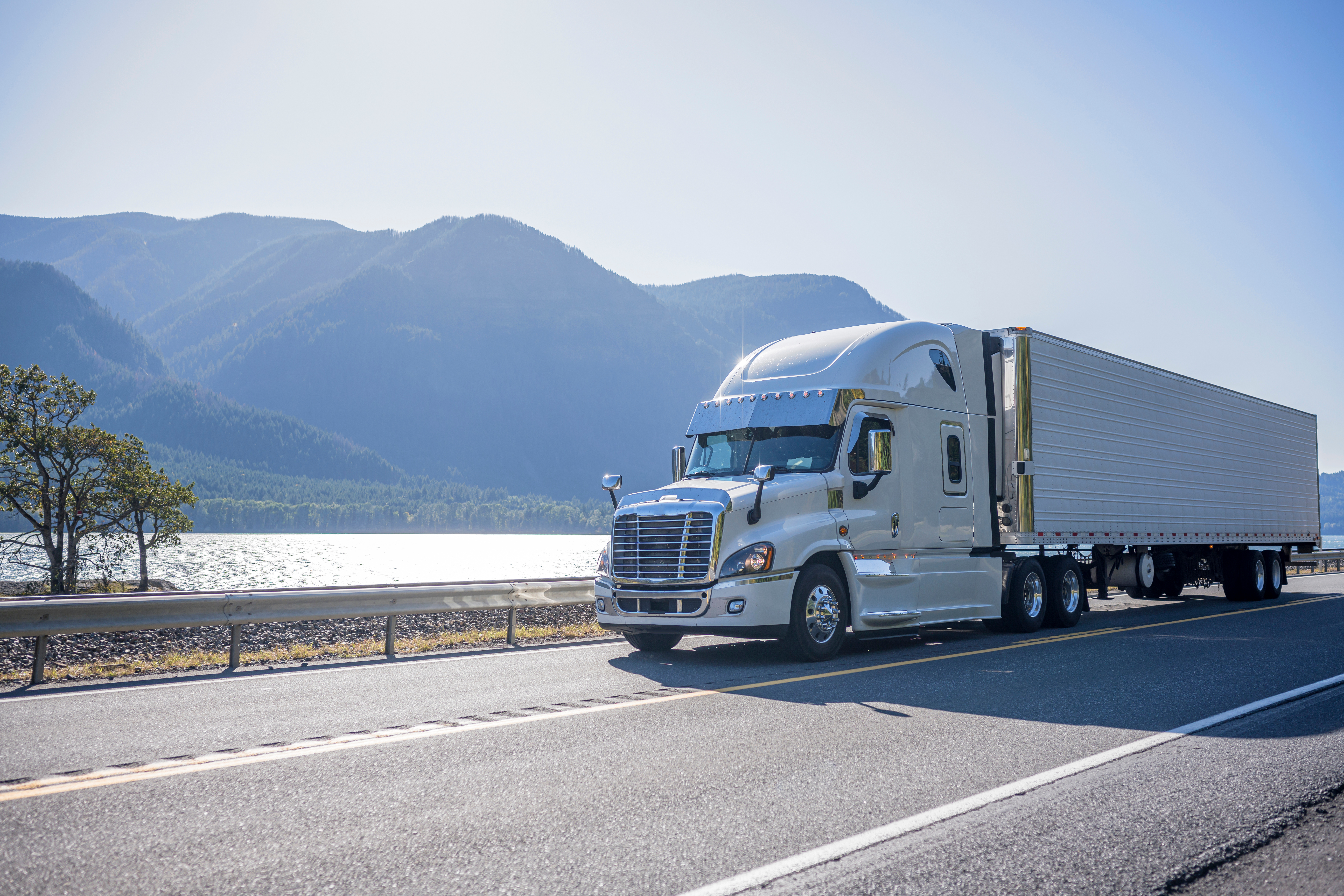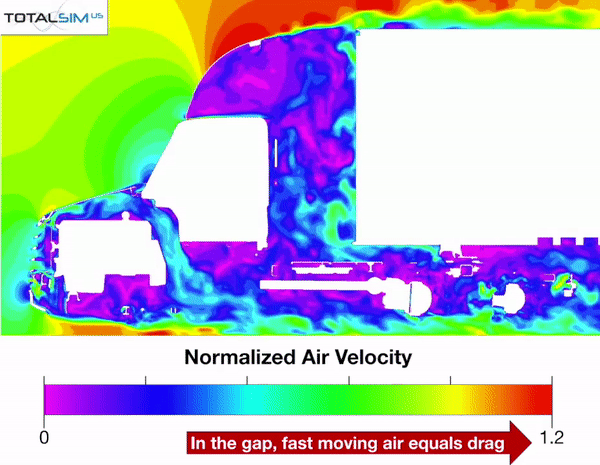Imagine saving millions in your trucking company — not by overhauling your entire fleet, but through intelligent, incremental improvements. This is the power of trucking innovation, where even the most minor changes can drive significant impact.
Aerodynamic innovations, in particular, are turning heads for their role in steering the industry towards a more efficient and sustainable future. For example, reducing drag using a single trailer gap device can save 3-6% MPG in fuel costs and reduce carbon emissions by 20,000 lbs/yr.
In this deep dive, we’ll explore how these truck innovations are reshaping the world of trucking, highlighting the benefits not just in terms of efficiency but also for safety and sustainability.
The Importance of Innovation in Trucking
Innovation is critical to staying competitive in the trucking industry. It’s not just about adopting the latest tools and trucking trends — it’s about integrating advanced technologies and smarter logistics to improve goods movement. This approach aims to make transportation faster, safer, and more environmentally friendly.
Trucking innovation spans many technology areas, from autonomous vehicles to AI-driven operations. Efficiency is critical to innovation, as reducing time and fuel directly impacts costs. Companies can save significantly by integrating streamlined truck designs and optimized routing software into their fleets. Safety is also a major focus, with technologies aiming to protect drivers and cargo. Additionally, as environmental consciousness grows, the industry is adopting greener practices like electric trucks and sustainable fuels.
TruckLabs’ recent successful Series B funding illustrates the industry’s commitment to sustainability. Beyond financial backing, this endorsement demonstrates the potential for innovative ideas to make trucking more efficient, safer, and environmentally friendly.
Leading Trends in Trucking Innovation
Currently, the trucking industry is undergoing a technological revolution. Several innovations, such as advancements in truck fleet management and autonomous trucking, are transforming the logistics and operations sector. Let’s look at some of the top innovative trucking trends.
Advancements in Fleet Management Software
Fleet Management Systems (FMS) have evolved significantly over the years. What began as essential vehicle tracking tools have now transformed into sophisticated systems capable of managing the entire lifecycle of fleet operations. Modern FMS features include:
- GPS tracking
- Fuel management
- Notifications and alerts
- Fleet maintenance
- Efficient route planning
- Driver behavior monitoring systems
An FMS offers actionable insights that help fleet managers enhance safety and improve operations. These systems enable more efficient routing decisions through real-time tracking, provide timely alerts to drivers, improve time slot management, streamline delivery processes, and boost fleet efficiency.
The Rise of Autonomous Trucks
There is a significant potential for autonomous trucks to revolutionize the trucking industry. Though substantial challenges remain, including technical, regulatory, and safety concerns, the potential benefits are vast. From increased efficiency to improved safety, autonomous vehicles have the potential to make a huge impact.
In their latest testimony to Congress, the American Trucking Association (ATA) spoke about the significant role of autonomous trucks. They reported that nearly 94% of truck accidents result from human error, suggesting that self-driving technology could significantly improve road safety. The ATA also noted that these advancements can reduce traffic and lower emissions, illustrating the trucking industry’s commitment to innovation and economic growth.
Innovations in Aerodynamic Technologies
The trucking industry is rapidly advancing aerodynamic technologies. Among these truck innovations is TruckWings, an aerodynamic device that reduces drag, enhances stability, and improves fuel efficiency. When mounted on the tractor, this tool automatically closes the gap between the cab and trailer, significantly reducing drag.
TruckWings is transforming the industry with remarkable benefits, such as:
- Fuel savings of 3-6%
- Thousands of dollars in savings per truck and millions of dollars per fleet
- A greener future through reduced carbon emissions
In addition to trailer aerodynamics, other aerodynamic innovations are changing the trucking industry. Add-on devices such as side skirts, boat tails, and vortex generators reduce aerodynamic drag and improve fuel efficiency.
Moreover, aerodynamic cab designs are also emerging, with curved edges, smooth surfaces, and minimal protrusions to minimize air resistance and maximize energy efficiency. By maximizing fuel usage and reducing emissions, these features can reduce the truck’s environmental impact.
Shift to Electric Trucking Fleets
Trucking companies are increasingly transitioning towards electric trucks, driven by the potential for lower operational costs and the push for a greener future. Recent International Council on Clean Transportation studies show that battery electric trucks emit 63% less greenhouse gas emissions than diesel. Other benefits include:
- Higher energy density
- Enhanced safety
- Improved fast-charging capabilities
- More efficient use of space due to batteries taking up significantly less room
Major OEMs like Daimler, Volvo, MAN, and Renault trucks are leading the electric truck revolution, investing in production facilities, charging infrastructure, and research and development. Their efforts are paving the way for a more sustainable and efficient future in the trucking industry.
Truck Platooning Innovations
Platooning is a concept that aims to reduce traffic congestion and fuel consumption. The process involves digitally tethering lines of commercial vehicles together to optimize distances between them. Vehicles can increase aerodynamic airflow and fuel efficiency by synchronizing braking and acceleration across the platoon, leading to significant fuel savings.
Truck platooning has been the subject of numerous studies by the National Renewable Energy Laboratory over the years. Research reveals that fuel savings range from 4% to 17% depending on various factors, including vehicle position, speed variation, following distance, and road conditions. Efficiencies and fuel savings will likely increase as the industry explores this technology.
IoT and Telematics Integration
The Internet of Things (IoT) is significantly changing the trucking industry. IoT is an internet-connected network of physical objects — “things” — that can exchange data with other devices and systems through sensors, software, and other technologies.
A branch of IoT called telematics uses wireless devices such as GPS, accelerometers, and sensors to collect data about trucks and their environment. With fleet telematics, trucking companies can get real-time information on vehicles’ locations, movements, and status. There are a variety of applications for this data, including:
- Fleet management: Telematics can help fleet managers monitor their vehicles in real-time, improving operational efficiency and reducing costs.
- Predictive maintenance: Using telematics data, predictive maintenance tools can identify potential vehicle issues before they become serious problems, reducing downtime and repair costs.
- Driver safety: Telematics can monitor driver behavior, helping to identify unsafe practices and provide coaching to improve safety.
- Regulatory compliance: Telematics can automate many aspects of compliance with regulations like the Electronic Logging Device (ELD) mandate, making it easier for fleets to adhere to these rules.
- Sustainability: By providing detailed data on fuel consumption and vehicle emissions, telematics can help fleets reduce their environmental impact.
As truck innovations continue to evolve, the role of IoT and telematics will only grow more critical. These technologies offer significant opportunities for trucking companies to improve their operations, reduce costs, and enhance customer service.
The Future of Aerodynamics in Trucking Innovation
Aerodynamics for trucking holds immense promise, with aluminum and carbon fiber composites gaining much attention from the industry. These advancements, together with sustainable trucking and big data integration, offer revolutionary possibilities. Here’s a look at some possible future developments.
Emerging Trends in Aerodynamics
Revolutionary materials like Carbon Fiber Reinforced Polymers and Shape-memory Alloys are transforming vehicle design with benefits like weight reduction and enhanced durability. Advances in computational fluid dynamics are enabling designs that minimize drag, increasing the potential to improve fuel efficiency and vehicle performance.
Integrating Aerodynamics with Technology
Integrating aerodynamic innovations with key technologies like electrification and autonomous systems is transforming truck design. Thanks to streamlined cooling systems, electric trucks can achieve aerodynamic shapes that improve energy efficiency. Aerodynamic enhancements also improve autonomous trucks’ performance by reducing drag and optimizing energy consumption.
Sustainability and Aerodynamics
Aerodynamics is a critical component in the trucking industry’s sustainability drive, primarily by reducing air resistance to improve fuel efficiency and lower carbon emissions. TruckWings exemplifies this commitment to eco-friendliness by effectively reducing CO2 emissions in diesel, alternative fuel, and electric Class 8 trucks. TruckLabs aims to save 100 million metric tons of CO2 annually, marking a substantial step towards a more sustainable future in trucking.
Step Into The Future of Trucking Innovation With TruckLabs
At TruckLabs, we’re not just following trucking trends — we’re creating them. With groundbreaking technologies like TruckWings, we’re steering the trucking industry toward a more sustainable and efficient future.
Join us in this journey of trucking innovation and help shape the industry’s future. Explore our resources or contact us to discover how you can contribute to a greener tomorrow.


